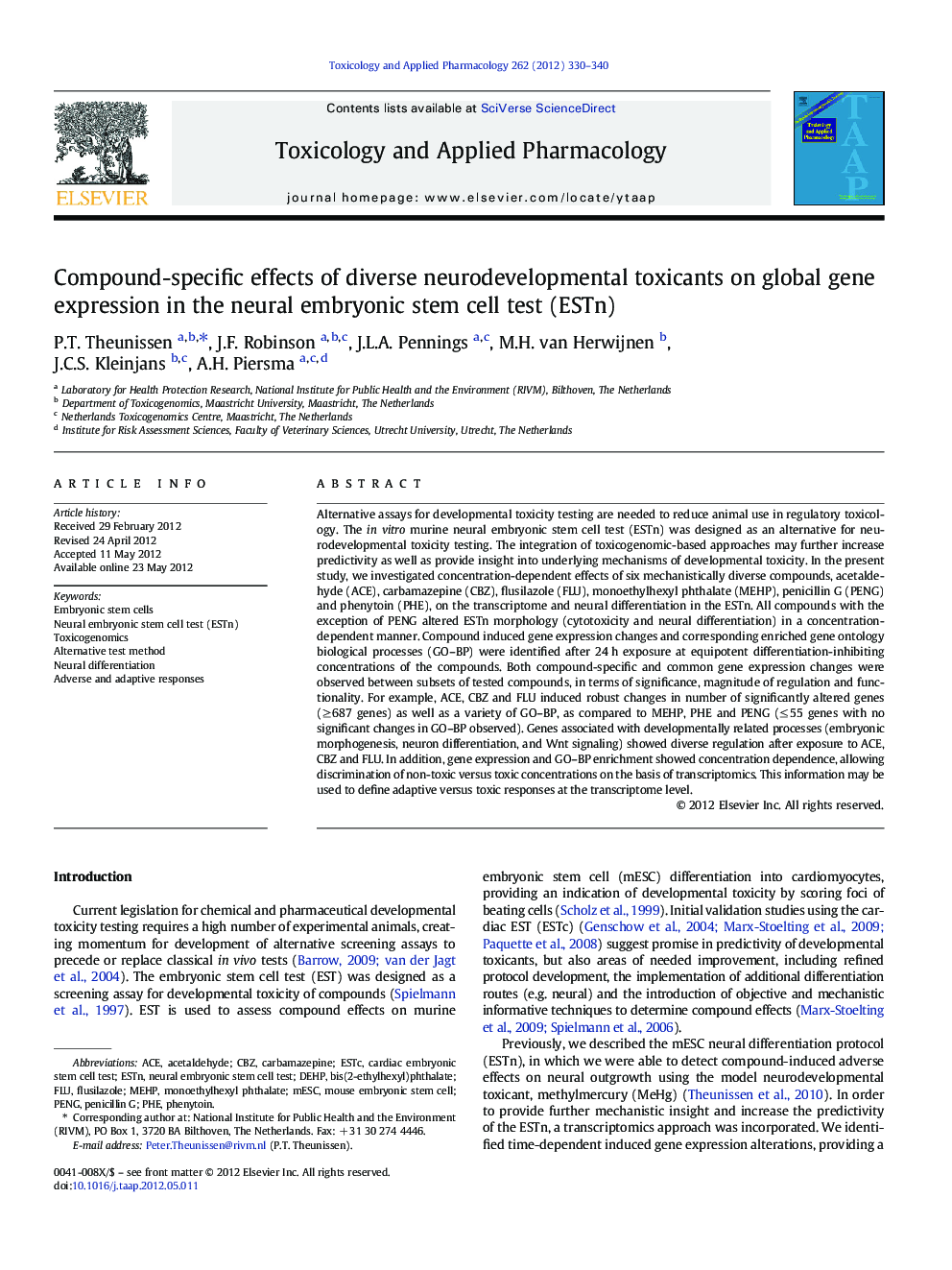| کد مقاله | کد نشریه | سال انتشار | مقاله انگلیسی | نسخه تمام متن |
|---|---|---|---|---|
| 2569043 | 1128505 | 2012 | 11 صفحه PDF | دانلود رایگان |

Alternative assays for developmental toxicity testing are needed to reduce animal use in regulatory toxicology. The in vitro murine neural embryonic stem cell test (ESTn) was designed as an alternative for neurodevelopmental toxicity testing. The integration of toxicogenomic-based approaches may further increase predictivity as well as provide insight into underlying mechanisms of developmental toxicity. In the present study, we investigated concentration-dependent effects of six mechanistically diverse compounds, acetaldehyde (ACE), carbamazepine (CBZ), flusilazole (FLU), monoethylhexyl phthalate (MEHP), penicillin G (PENG) and phenytoin (PHE), on the transcriptome and neural differentiation in the ESTn. All compounds with the exception of PENG altered ESTn morphology (cytotoxicity and neural differentiation) in a concentration-dependent manner. Compound induced gene expression changes and corresponding enriched gene ontology biological processes (GO–BP) were identified after 24 h exposure at equipotent differentiation-inhibiting concentrations of the compounds. Both compound-specific and common gene expression changes were observed between subsets of tested compounds, in terms of significance, magnitude of regulation and functionality. For example, ACE, CBZ and FLU induced robust changes in number of significantly altered genes (≥ 687 genes) as well as a variety of GO–BP, as compared to MEHP, PHE and PENG (≤ 55 genes with no significant changes in GO–BP observed). Genes associated with developmentally related processes (embryonic morphogenesis, neuron differentiation, and Wnt signaling) showed diverse regulation after exposure to ACE, CBZ and FLU. In addition, gene expression and GO–BP enrichment showed concentration dependence, allowing discrimination of non-toxic versus toxic concentrations on the basis of transcriptomics. This information may be used to define adaptive versus toxic responses at the transcriptome level.
Journal: Toxicology and Applied Pharmacology - Volume 262, Issue 3, 1 August 2012, Pages 330–340